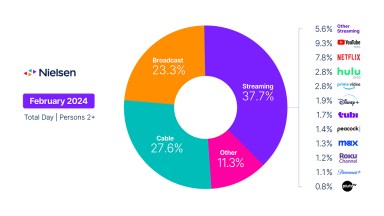
The term “brand” is often bandied about and rarely defined. It can be tied to reputation, value propositions or culture—but Jeff Bezos coined one great definition: “Your brand is what people say about you when you’re not in the room.”
Simply put, your brand is how people see, experience and perceive you.
Given this dynamic, marketers have many critical roles to play—including engaging customers and driving growth. But one of the most important roles is the ongoing intentional work they need to do to define and create a compelling brand narrative that unifies their organization, resonates with customers and the market, and helps differentiate the company internally and externally across all touchpoints.
Consumers and businesses have more choices than ever and vote with their wallets every day. In a complex and dynamic marketplace, it is important for companies to be clear about their values and purpose as well as the unique product or service they bring to their audiences—including what they stand for, what they offer and how they deliver. While building brands can take time, every organization—in startup, transformation or expansion mode—should stick to four key principles throughout the process.
Be clear about who you are
A brand identity reflects everything a company is and does, and the stronger the brand, the more readily consumers, prospects and employees can engage. It’s critical that marketers and all senior leaders are closely aligned on the mission and purpose of the company and its core values. The company’s external persona and presentation should mirror its internal guiding compass to create congruence; enduring brands are built on solid foundations that allow them to stay true and consistent to engender trust and loyalty among employees and customers alike.
By building on a clear purpose, a company can more successfully define its identity and ensure its strategies and actions align. This, in turn, can create greater clarity around target audiences, key messages, brand actions and core product value propositions. Following the sale of its IQ business in 2020, my company, Nielsen, articulated a new purpose: Powering a better media future for all people. This purpose encapsulated our role (powering), our goal (a better media future) and our values (all people: inclusion). This statement also supported our tag line—“audience is everything”—the external-facing summation of our brand.
A strong purpose provides clarity and sets a bar for the brand. Support of and adherence to it will help establish credibility and trust over time and can give an organization more of a voice and distinction in the marketplace. Once a company knows what consumers want and need, and where its opportunity lies in the market, marketers may turn to market research and data to optimize brand and business-building activities.
Use market research and data to inform
As the CMO of a company that offers audience measurement media planning and marketing optimization solutions, I’ve found that consumers’ expectations of brands are ever-evolving and can leave marketers feeling as though they’re playing catch-up. With macro and micro changes occurring daily, marketers need to have a pulse on consumer attitudes and behaviors.
We should think of market research and behavioral data mining as a continuous process: one that enables companies to monitor what consumers need and expect. Marketers should look at how consumers are reacting to campaigns or promotions. With this information, they should react appropriately by making changes to current campaigns or promotions based on consumer sentiment. Fostering a two-way dialogue—e.g., through social media—can help marketers tailor messages to audiences.
For a healthy brand, insights from quantitative, qualitative and analytic efforts shouldn’t just be treated as a one-and-done activity for a branding campaign. Marketers should consider conducting quarterly brand surveys and pulse surveys, and they should ensure they’re measuring all campaigns to understand the impact on perception and behavior. They should also use any insights available from call centers, service channels and social media to inform continuous message testing.
Ensure the brand message is real
With a healthy pulse on your consumers, market and brand metrics, it is critical to execute on the value proposition that delivers while also ensuring that employees are in line with brand messaging. Consumer experience remains a powerful brand builder.
It is tempting for brands in need of change to signal the change they are pursuing through a campaign or messaging. While sometimes this is necessary—as in periods of crisis—it is always preferable to “be the brand” in tangible ways. Organizations should take action on their values and have tangible proof points of their commitments.
It’s no surprise that employee engagement is an important component of a company’s success and ability to live its brand in an authentic way. When employees are engaged and believe in the company’s mission and values, I’ve found that consumers feel it, which further cements their trust in the brand. To keep employees engaged, marketers can work with senior leaders to ensure that they are living the brand’s mission and values, which creates a trickle-down effect throughout the organization.
Share the brand story widely
With the above underway, it’s time to tell the story. All stakeholders—employees, shareholders, clients and prospects—are potential brand advocates, and the marketer’s job is to ensure those stakeholders are aware, actively considering, using and, hopefully, advocating for the brand and its products or services.
Marketers should achieve overall broad-based brand awareness and favorability while prioritizing the right audiences, campaigns, channels and messages to garner consumer consideration (and ideally purchases). While clearly there are messages and channels that lead with brand—including levers like sponsorships, social media and communications—there are also opportunities to think of brand building and acquisition goals together, as the historical purchase funnel is often condensed, with brand and acquisition happening in a mutually reinforcing and simultaneous way.
Building brands to drive business and reputation is one of the most critical roles for a marketer—a disciplined approach to understanding the brand’s purpose and value proposition and having a real-time understanding of the consumer will help them ensure success in the marketplace.
This article originally appeared on Forbes.com.



